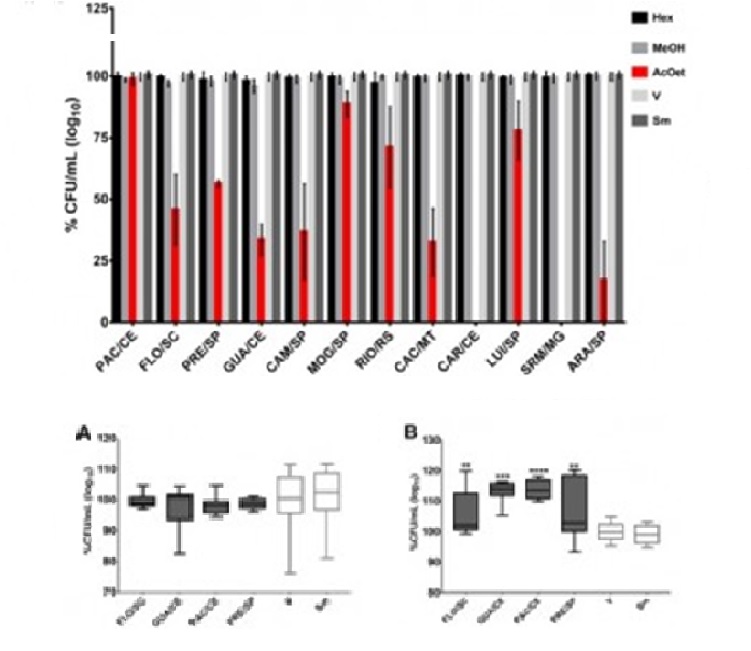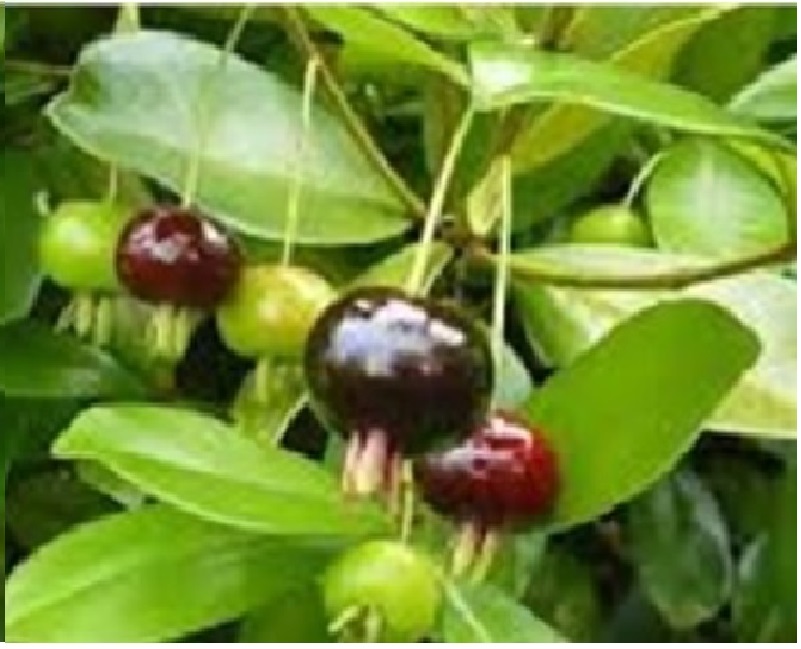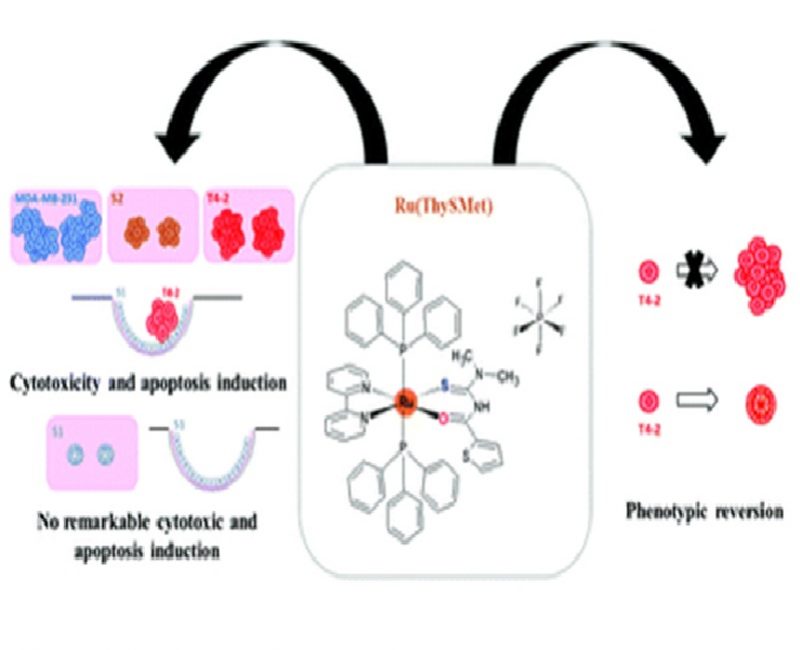
Authors:
Ribeiro, Sabrina M. 1 ; Fratucelli, Erick D. O. 1 ; Bueno, Paula C. P. 2, 3 ; de Castro, V, Marlene Kelly 3 ; Francisco, Amanda Alcala 3 ; Cavalheiro, Alberto Jose 3 ; Klein, I, Marlise 1
Abstract:
Background Dental caries is a biofilm-diet-dependent worldwide public health problem, and approaches against microorganisms in cariogenic biofilms are necessary.
Methods: The antimicrobial and antibiofilm activities of 12 Casearia sylvestris extracts (0.50 mg/mL) from different Brazilian biomes (Atlantic Forest, Cerrado, Caatinga, Pampa, and Pantanal) and varieties (sylvestris, lingua, and intermediate) were tested against two species found in cariogenic biofilms (Streptococcus mutans and Candida albicans). The extracts effective against S. mutans were used to evaluate the “adhesion strength{”} of this bacterium to the salivary pellicle and initial glucan matrix and the S. mutans-GtfB activity. Also, the antimicrobial activity against S. mutans of three fractions (methanol, ethyl acetate, and hexane; 0.25 mg/mL) from the extracts was evaluated.
Results: Three extracts from the Atlantic Forest variety sylvestris (FLO/SC, GUA/CE, PRE/SP) reduced >= 50% (> 3 logs) S. mutans viable population (p < 0.0001 vs. vehicle), while two extracts from the same biome and variety (PAC/CE, PRE/SP) decreased >= 50% of the viable counts of C. albicans (p < 0.0001 vs. vehicle). For S. mutans biofilms, three extracts (GUA/CE, PAC/CE, PRE/SP) reduced the biomass by >= 91% (p > 0.0001 vs. vehicle) and 100% of the microbial population (p < 0.0001 vs. vehicle). However, for the fungal biofilm, two extracts (PAC/CE, PRE/SP) reduced the viable counts by >= 52% (p < 0.0001 vs. vehicle), but none reduced biomass. The extracts with higher antimicrobial and antibiofilm activities presented higher content of clerodane-type diterpenes and lower content of glycosylated flavonoids than the less active extracts. The extracts had no effect on the removal of cells adhered to the pellicle (p > 0.05 vs. vehicle) while promoted the detachment of a larger number of S. mutans cells from GtfB-glucan matrix (p < 0.0031 vs. vehicle), and FLO/SC, GUA/CE and PRE/SP reduced the quantity of glucans (p < 0.0136 vs. vehicle). Only the ethyl acetate fractions reduced the microbial population of S. mutans (p < 0.0001 vs. vehicle), except for one (PAC/CE). Among the ethyl acetate fractions, three from var. lingua (two from Cerrado, and one from Cerrado/Caatinga) reduced >= 83% of the microbial population.
Conclusions: C. sylvestris extracts from Atlantic Forest var. sylvestris and ethyl acetate fractions from Cerrado and Cerrado/Caatinga var. lingua may be used as a strategy against cariogenic microorganisms.
1 Department of Dental Materials and Prosthodontics, São Paulo State University (UNESP), School of Dentistry, Rua Humaitá, 1680. Araraquara, Sao Paulo, 14801-903, Brazil
2 University of São Paulo (USP), School of Pharmaceutical Sciences, Ribeirão Preto, São Paulo, Brazil
3 Department of Organic Chemistry, São Paulo State University, Rua Prof. Francisco Degni 55, Araraquara, São Paulo, 14800-060, Brazil
Link to article: https://bmccomplementalternmed.biomedcentral.com/articles/10.1186/s12906-019-2717-z#author-information







